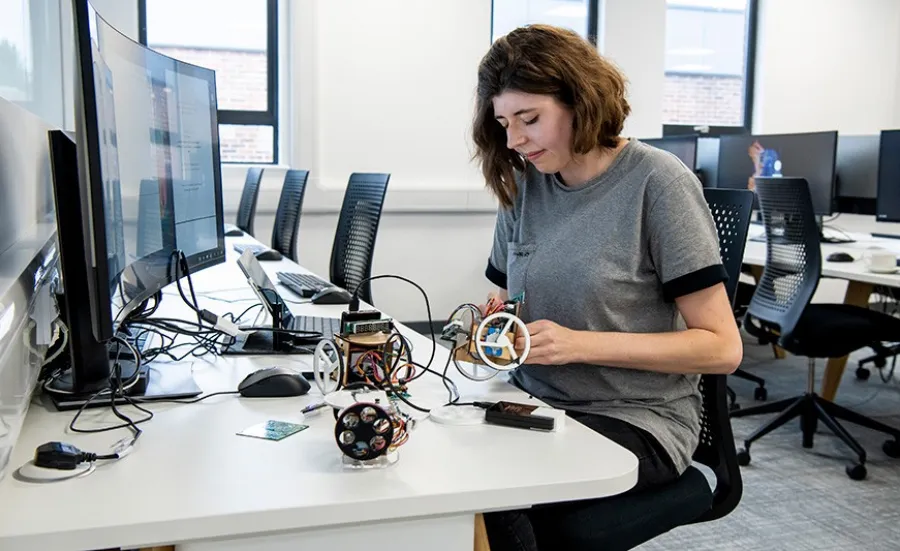Current research degree projects

Explore our current postgraduate research degree and PhD opportunities.

Explore our current postgraduate research degree and PhD opportunities.

This project will use device simulations combined with transient electronic and optoelectronic characterisation techniques to unambiguously identify the resistive switching mechanisms underlying memristors based on a wide variety of materials systems including perovskites and titanium-based compounds.
Traditional circuit theory, grounded in transfer functions and state-space models, fall short at addressing the complexities of modern, bidirectional power networks. This project investigates data-driven control methodologies tailored for active networks, with a particular focus on coordinated control strategies, distributed controllers, and their practical implementation on power converter devices.
Eastleigh Borough Council with John Hansard Gallery and Winchester School of Art at the University of BOB体育登录网址_欧宝体育官网平台-APP|下载 have established a partnership to offer artist residencies at One Horton Heath (OHH) as PhD Studentships.
The objective of this project is to develop a gyroscope using a micron-sized levitated nanodiamond containing nitrogen-vacancy (NV) defects. We will leverage the properties of the NVs to accurately measure particle rotation, overcoming limitations found in other levitated optomechanics platforms with the goal of delivering a competitive levitated micro-inertial sensor.
This project falls within the field of levitated optomechanics, focusing on experiments involving nanodiamond particles with nitrogen-vacancy (NV) quantum defects. The aim is to explore the coupling between the internal spin degrees of freedom of the NV centres and the particle's motion, with the objective of creating macroscopic quantum states.
This project will develop machine learning (ML) techniques for processing acoustic data from sensor arrays, allowing the enhancement of signals and localization of sound sources. While ML has been used for single sensors, this project will create new methodologies for processing data from multiple sensors, improving underwater acoustic analysis.
This project develops advanced and sustainable polymer materials for power electronic inverters in wind energy systems. By combining nanocomposites, cross-linked networks, and bio-based polymers, it aims to enhance thermal, electrical, and mechanical performance, supporting the creation of more reliable, efficient, and environmentally friendly renewable energy infrastructure.
This project aims to develop a criticality ranking system for power grid assets using data-driven approaches. By applying machine learning and statistical models, it prioritizes high-risk assets, enabling proactive decisions, optimised resource allocation, enhanced maintenance efficiency, and improved grid reliability.
This project aims to develop advanced flexible materials used as dielectric elastomer transducers (DET) in energy harvesting applications. It offers a unique opportunity to drive progress in flexible energy-harvesting technologies and to address contemporary challenges associated with expanding technologies and innovative applications.
The goal of this project is to create a predictive sensing methodology, leveraging AI-driven analytics to provide detailed temporal and spatial flow characteristics.